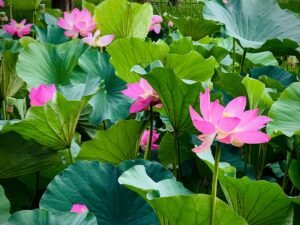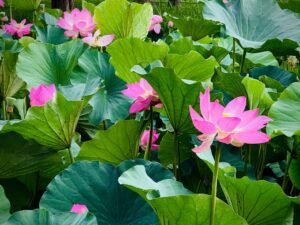

How to Tell a Simple Story About Your Weekend in Norwegian
Telling a story about your weekend in Norwegian can be an enjoyable and rewarding experience, especially for those looking to improve their language skills. It allows you to practice vocabulary, grammar, and pronunciation while sharing personal experiences. The ability to narrate your weekend not only enhances your conversational skills but also helps you connect with others who speak the language.
Whether you are recounting a quiet weekend at home or an adventurous outing, the structure of your story can make all the difference in how it is received. In this article, we will explore various aspects of storytelling in Norwegian, focusing on how to effectively convey your weekend experiences. From basic phrases to structuring your narrative, we will cover essential elements that will help you craft a compelling story.
By the end, you will be equipped with the tools necessary to share your weekend tales with confidence and flair. Start learning Norwegian at the NLS Norwegian Language School now!
Table of Contents
ToggleSummary
- Introducing basic Norwegian phrases and past tense verbs is essential for telling a simple story about your weekend in Norwegian.
- Structuring your story with a beginning, middle, and end helps to create a coherent narrative.
- Adding details and adjectives can make your story more interesting and engaging for your audience.
- Incorporating time markers helps to sequence your weekend events and make your story more understandable.
- Practicing pronunciation and intonation is crucial for a fluent delivery and engaging storytelling in Norwegian.
Basic Norwegian Phrases for Describing Your Weekend
To begin telling your weekend story, it is crucial to have a repertoire of basic phrases at your disposal. Simple expressions such as “Jeg hadde en fin helg” (I had a nice weekend) or “Helgen var spennende” (The weekend was exciting) can serve as excellent starting points. These phrases not only set the tone for your narrative but also provide a framework upon which you can build more elaborate descriptions.
Additionally, incorporating phrases that describe specific activities can enrich your storytelling. For instance, “Jeg gikk på tur” (I went for a walk) or “Vi så en film” (We watched a film) can help paint a vivid picture of your weekend activities. By familiarising yourself with these basic expressions, you will find it easier to articulate your experiences and engage your audience.
Structuring Your Story: Beginning, Middle, and End

A well-structured story is essential for effective communication. When recounting your weekend, consider dividing your narrative into three distinct parts: the beginning, middle, and end. In the beginning, introduce the setting and context of your weekend.
You might say, “På lørdag våknet jeg tidlig” (On Saturday, I woke up early), which sets the stage for what follows. The middle section should delve into the main events of your weekend. This is where you can elaborate on the activities you engaged in, such as meeting friends or exploring new places.
Finally, conclude your story by reflecting on your experiences or sharing what you learned. A simple closing statement like “Det var en minneverdig helg” (It was a memorable weekend) can provide a satisfying conclusion to your narrative.
Using Past Tense Verbs to Describe Your Weekend Activities
When telling a story about your weekend, it is important to use past tense verbs to accurately convey what you did. In Norwegian, the past tense can be formed in various ways depending on the verb type. For regular verbs, adding “-et” or “-te” to the infinitive form is common.
For example, “å spille” (to play) becomes “jeg spilte” (I played). Irregular verbs may require more attention, as their past forms do not follow a consistent pattern. For instance, “å gå” (to go) changes to “jeg gikk” (I went).
Familiarising yourself with these verb forms will enable you to narrate your weekend activities with clarity and precision, making your story more engaging for listeners.
Adding Details and Adjectives to Make Your Story More Interesting
To captivate your audience, it is essential to add details and adjectives that bring your story to life. Instead of simply stating “Jeg så en film” (I watched a film), you could enhance this by saying “Jeg så en spennende film med vennene mine” (I watched an exciting film with my friends). This not only provides more context but also evokes emotions and imagery that draw listeners in.
Consider incorporating sensory details as well—describe the sights, sounds, and feelings associated with your activities. For example, “Vi spiste deilig mat på restauranten” (We ate delicious food at the restaurant) adds richness to your narrative. By using descriptive language, you can create a more immersive experience for your audience and make your storytelling more memorable.
Incorporating Time Markers to Sequence Your Weekend Events

To effectively convey the sequence of events during your weekend, incorporating time markers is crucial. Words and phrases such as “først” (first), “deretter” (then), and “til slutt” (finally) help guide listeners through your narrative. For instance, you might say, “Først gikk jeg på markedet, deretter møtte jeg vennene mine” (First, I went to the market; then I met my friends).
These time markers not only clarify the order of events but also create a natural flow in your storytelling. By using them strategically, you can ensure that your audience follows along easily and remains engaged throughout your narrative.
Expressing Emotions and Reactions in Your Story
An effective story often includes expressions of emotions and reactions that resonate with listeners. Sharing how you felt during specific moments can add depth to your narrative. For example, saying “Jeg var veldig glad da jeg så vennene mine” (I was very happy when I saw my friends) allows listeners to connect with your experience on an emotional level.
Additionally, consider incorporating reactions to events that occurred over the weekend. Phrases like “Det var overraskende” (It was surprising) or “Jeg ble skuffet” (I was disappointed) can convey how certain experiences impacted you. By expressing emotions and reactions, you create a more relatable and engaging story that invites empathy from your audience.
Using Connectors to Link Your Weekend Activities
To create a cohesive narrative, using connectors is essential for linking different activities within your story. Words such as “og” (and), “men” (but), and “fordi” (because) help establish relationships between events and ideas. For instance, you might say, “Vi gikk til parken og spilte fotball” (We went to the park and played football), which smoothly connects two related activities.
Connectors not only enhance the flow of your story but also clarify how different events are interrelated. By employing these linguistic tools effectively, you can create a more sophisticated narrative that keeps listeners engaged and interested in what comes next.
Practicing Pronunciation and Intonation for a Fluent Delivery
Once you have crafted your story, practising pronunciation and intonation is vital for delivering it fluently. Norwegian has distinct sounds and rhythms that may differ from other languages, so taking the time to rehearse will improve clarity and comprehension. Pay attention to vowel sounds and consonant clusters that may pose challenges.
Moreover, intonation plays a significant role in conveying emotions and emphasis within your story. Practising with a native speaker or using language learning resources can help refine your delivery. The more comfortable you become with pronunciation and intonation, the more confident you will feel when sharing your weekend experiences.
Asking Questions and Engaging with Your Audience
Engaging with your audience is an important aspect of storytelling that can enhance interaction and connection. After sharing your weekend story, consider asking questions to invite feedback or encourage discussion. Phrases like “Hva gjorde du i helgen?” (What did you do over the weekend?) or “Har du vært der før?” (Have you been there before?) can prompt responses from listeners.
By fostering dialogue, you create an opportunity for deeper engagement and exchange of experiences. This not only enriches the storytelling experience but also allows you to practice conversational skills in Norwegian while building relationships with others.
Tips for Improving Your Norwegian Storytelling Skills
In conclusion, telling a simple story about your weekend in Norwegian is an excellent way to enhance your language skills while sharing personal experiences. By mastering basic phrases, structuring your narrative effectively, using past tense verbs accurately, and incorporating details and emotions, you can create engaging stories that resonate with listeners. For those looking to further develop their Norwegian language skills, consider enrolling in courses at the NLS Norwegian Language School in Oslo.
The school offers comprehensive programmes tailored for learners at all levels, providing an immersive environment where you can practice speaking and storytelling in Norwegian. With experienced instructors and a supportive community of fellow learners, NLS is an ideal place to refine your language abilities while enjoying the rich culture of Norway. By following these tips and actively engaging with others in conversation, you will undoubtedly improve your storytelling skills in Norwegian and gain confidence in sharing your experiences with others.
Happy storytelling!
Register for a Norwegian class at the NLS Norwegian Language School now!
If you want to learn Norwegian, you can register for classes here. We look forward to hearing from you and helping you become fluent in Norwegian.





